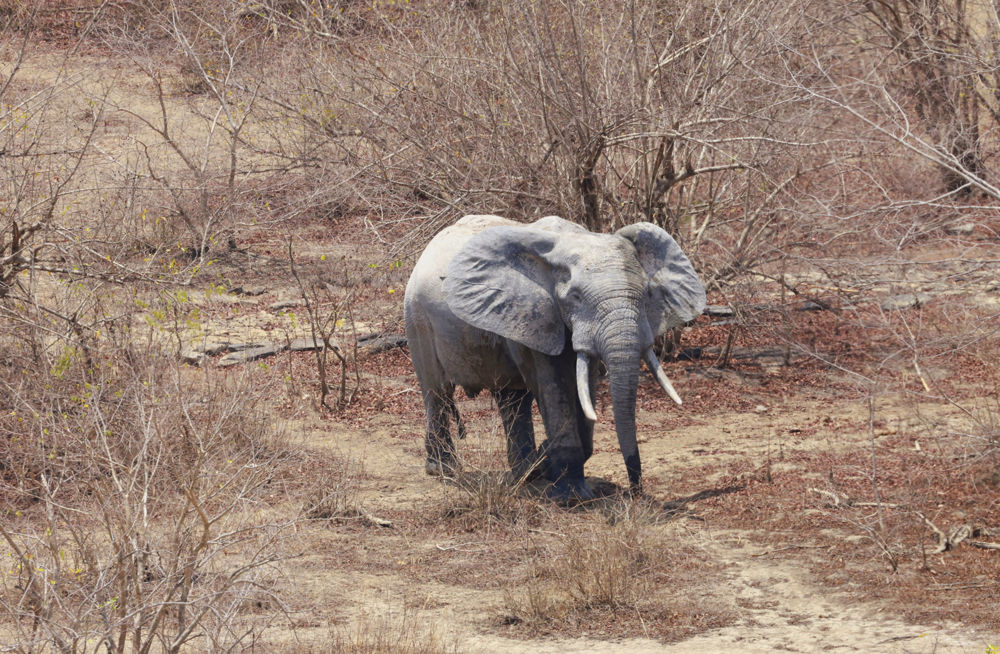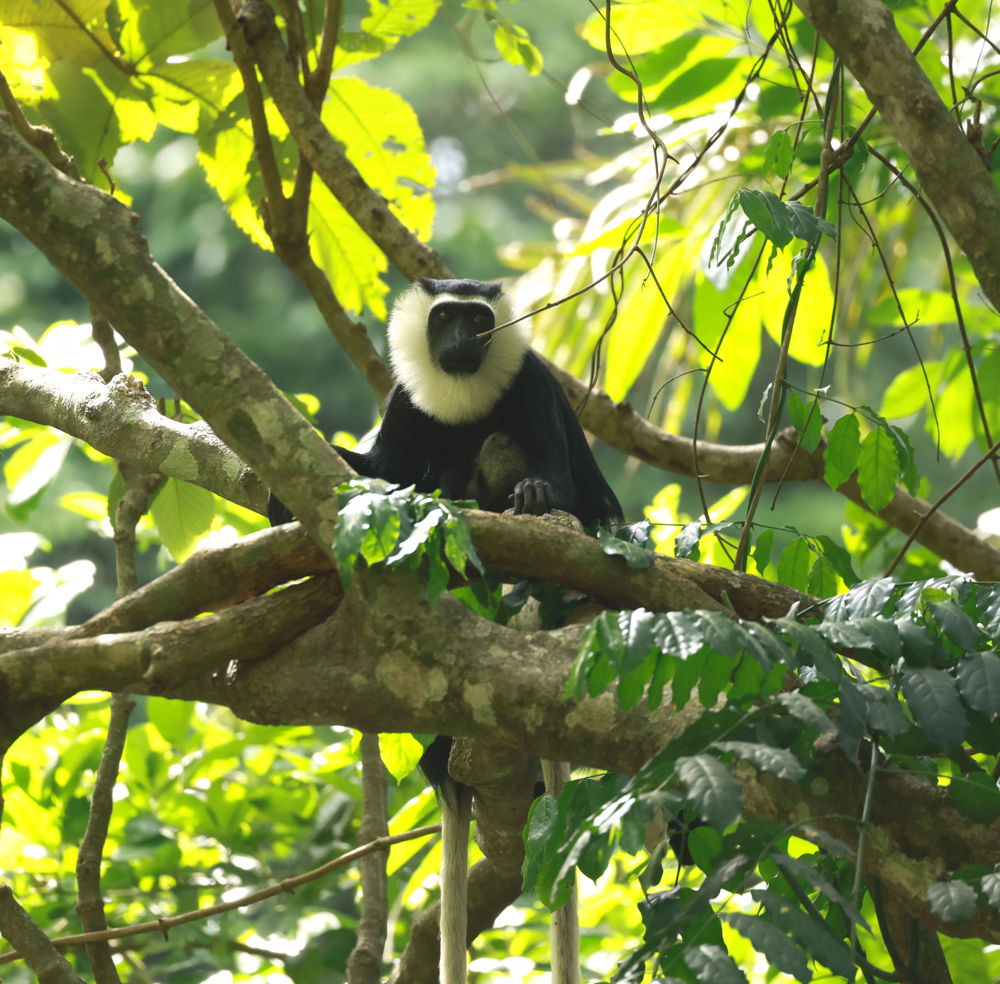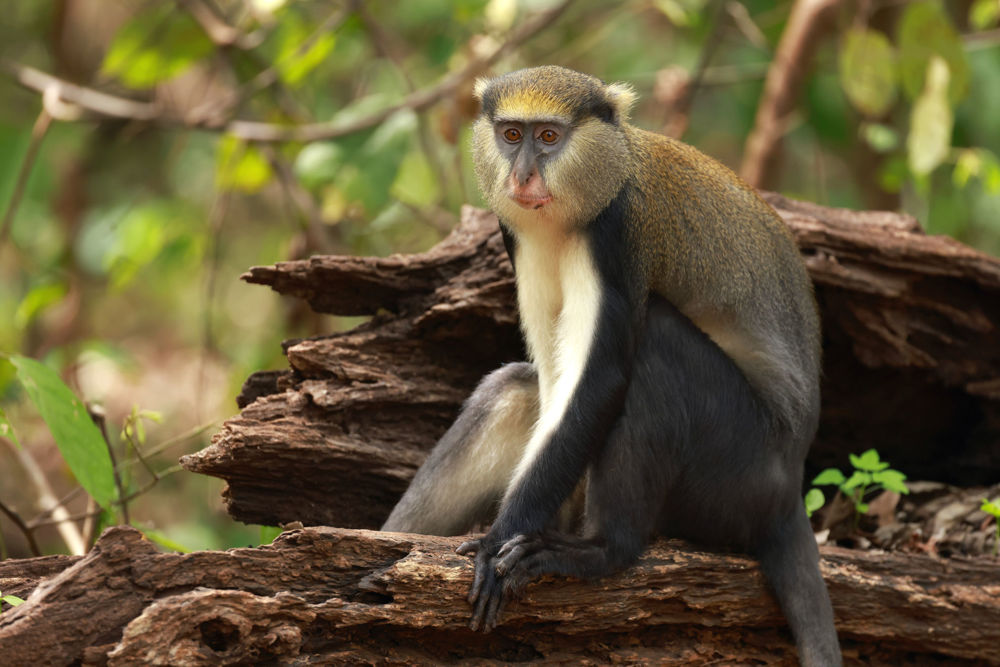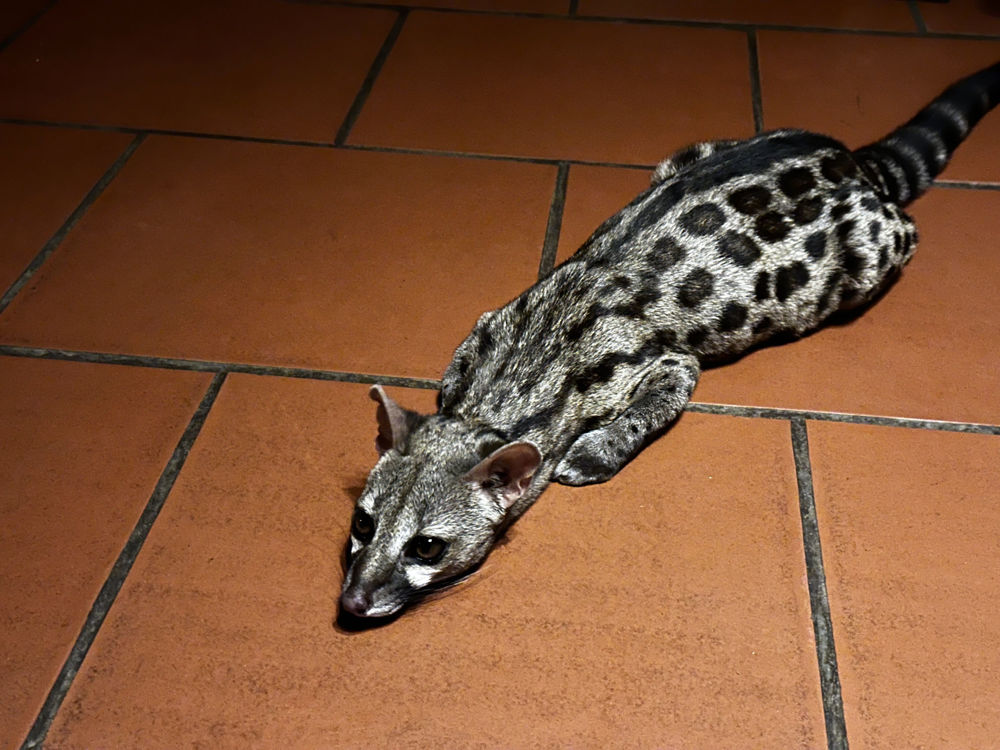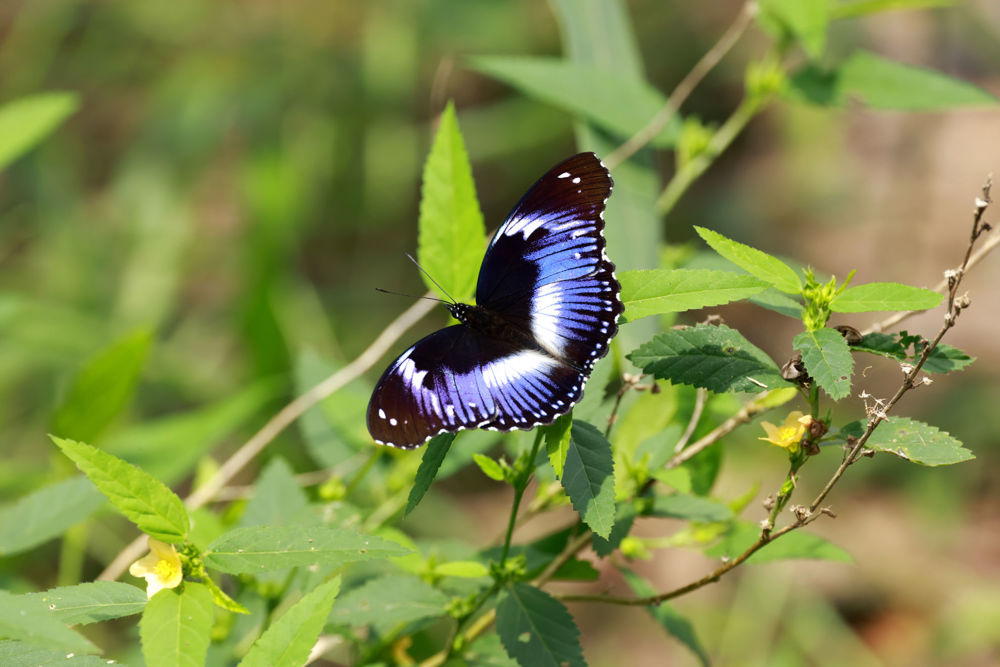Departure Date: March 8 - 27, 2025
Compiled By: Andrew Whittaker
Trip Leaders: Andrew Whittaker, Local Leader
Toll Free: 800.328.8368
Phone: 512.328.5221
Ghana 3/8/2025-3/27/2025

https://ebird.org/tripreport/
It was a true pleasure to lead such a superb group to Ghana and share with them this West African birding mecca. On this, my own first trip to the region, I was blown away by so many exotic and colorful birds and fascinating wildlife. First and foremost, a huge thanks to our expert local birders, Philip Senyo and Ibrahim Entsie, whose deep knowledge made the trip even more remarkable; to our exceptional driver, Steven Frimpong; and last but far from least, to the wonderfully welcoming Ghanaians whose warm smiles made our experience even more special.
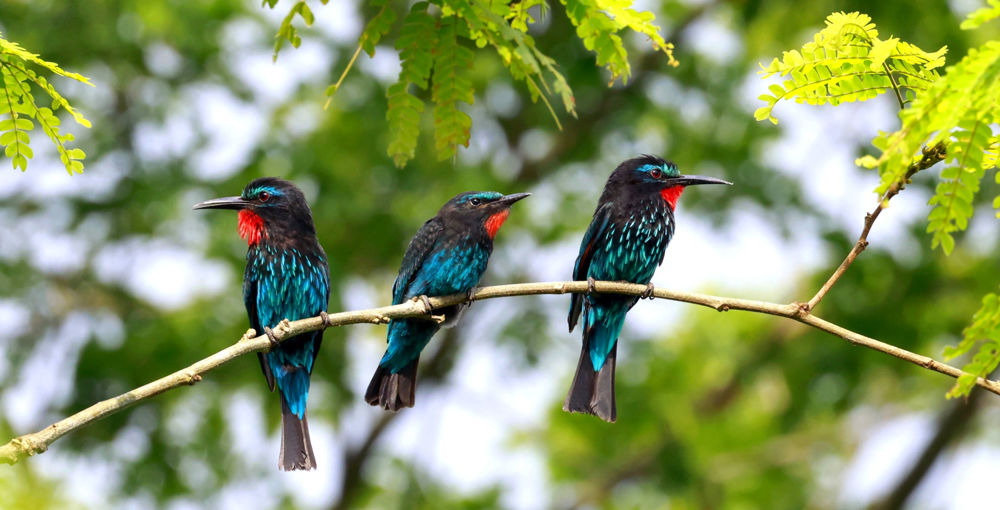
Stunning Black Bee-eaters were in our top ten © Andrew Whittaker
This beautiful country on Africa’s stunning Gold Coast served up many of the most sought-after West African and Upper Guinea endemics along with a broad cross section of African bird families, which were themselves new to many of us. And beyond that, there was exciting big game and a daily kaleidoscope of so many butterflies. Our comprehensive itinerary took us to all of Ghana’s major biomes, from lush lowland rainforests, coastal savannas, gallery forest, lagoons, and white-sand beaches to farm brush and the arid Sahel.
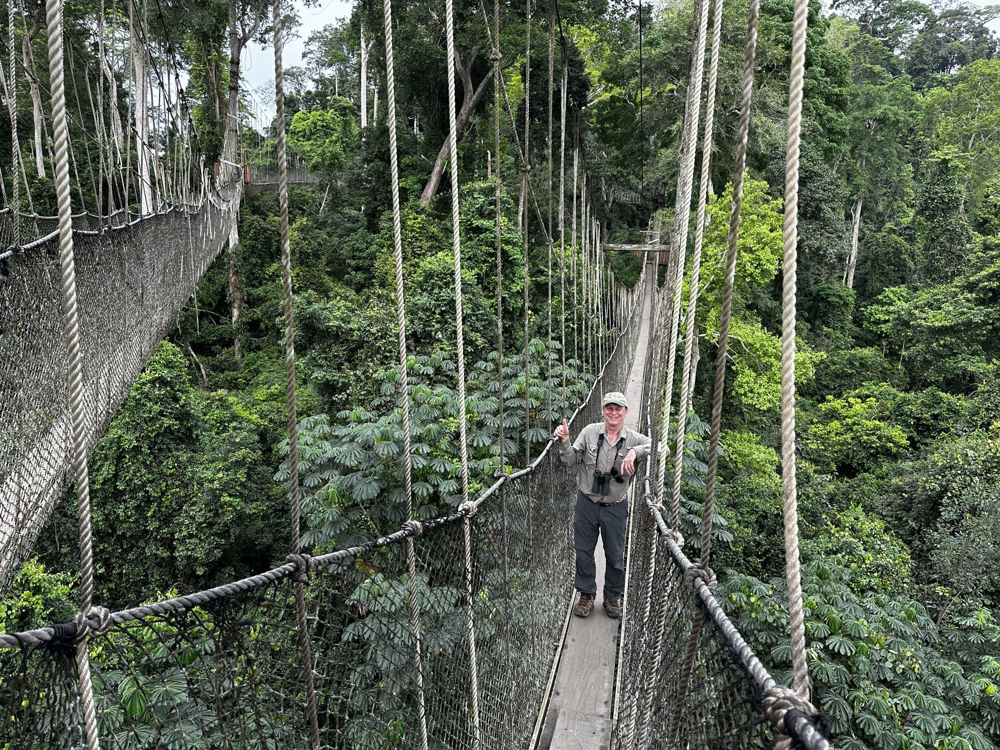
Birding magnificent lowland rainforest off the famous Kakum Canopy Walkway © Andrew Whittaker
Our adventure began in our delightful beach hotel in the colorful capital of Accra. Several of us arrived early and enjoyed birding the hotel’s lake and forested grounds, home to Woodland and Pied kingfishers and the fascinating Black Heron, observed fishing with its unique umbrella technique.
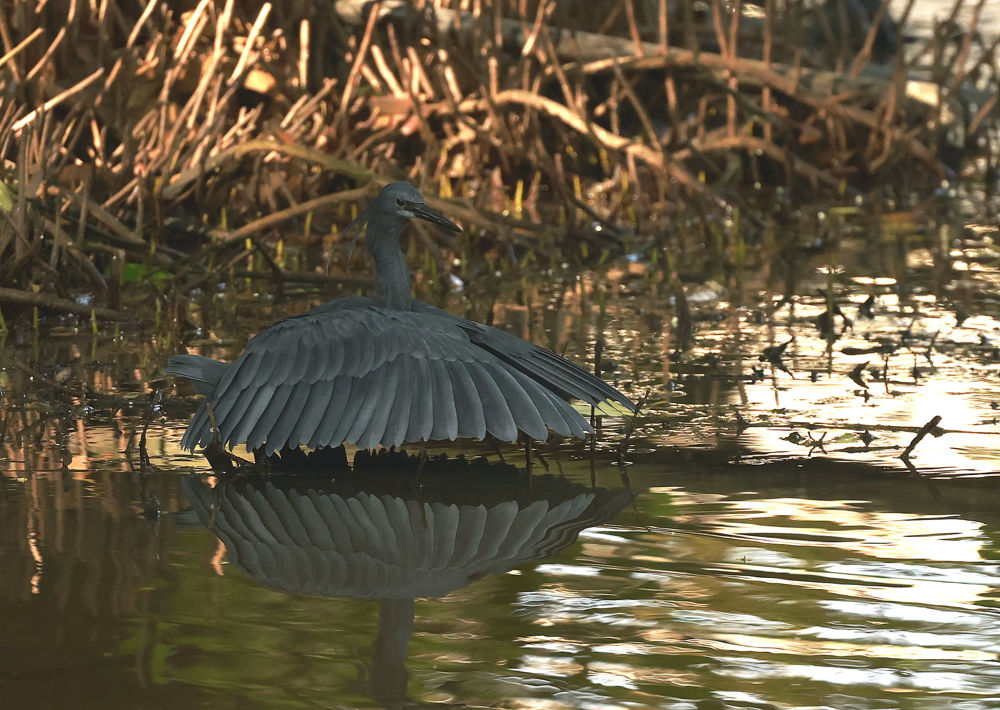
Fascinating umbrella fishing technique of the Black Heron © Andrew Whittaker
Full of excitement and anticipation, we departed early for a rich coastal area and Winneba Lagoon, a RAMSAR site of global importance to wintering shorebirds and terns. At our first stop, in low savanna, we were welcomed by our first White-throated Bee-eaters, a pair of fiery-colored Yellow-crowned Gonaleks, Sulphur-breasted Bushshrike, Rufous-chested Swallow, Copper Sunbird, Brown-throated Wattle-eye, and a surprise pair of Peregrine Falcons. At the nearby coastal lagoons, we were greeted by a fine assortment of Palearctic shorebirds, terns, and herons, including African Spoonbill, the localized White-fronted Plover, Curlew and Marsh sandpipers, Little Stint, and Roseate and West African Crested terns. We even had a mega-exciting vagrant in the form of a White-rumped Sandpiper I found; Ghana has less than a handful of records for the species. Amazingly, when I scouted this same site the day before the tour started, I also found and photographed a Broad-billed Sandpiper, a first for Ghana; sadly, we could not relocate this bird on our visit. A stunning Broad-billed Roller showed well, though, as we left the small fishing village.
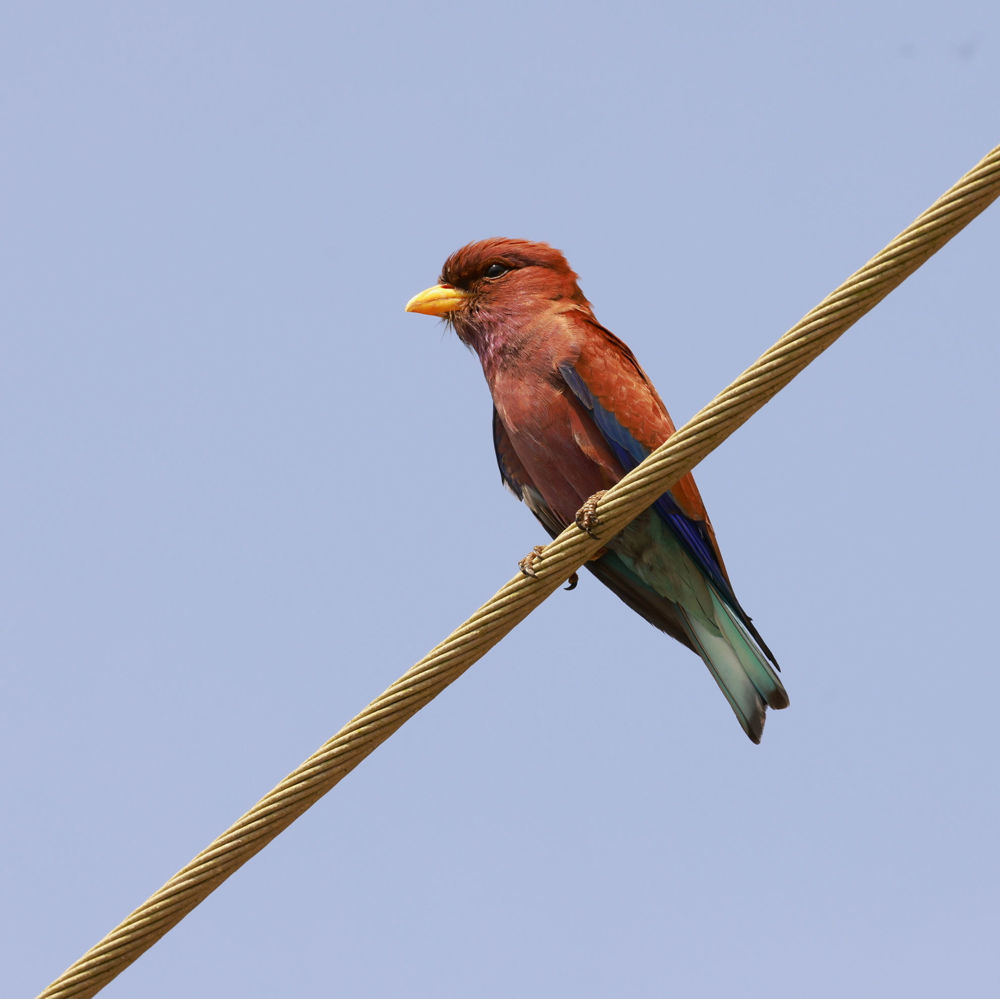
Broad-billed Roller © Andrew Whittaker
Later on, we stepped back into history with an interesting but solemn guided tour of the infamous Cape Coast Castle. Built in 1653, this is now a World Heritage Site, a chilling reminder of the horrors of the transatlantic slave trade.
We continued after lunch to our hotel in Jukwa, where the garden held our first turaco, the odd-looking Western Plantain-eater, along with the spectacular metallic colors of a male Splendid Sunbird, nesting Chestnut-breasted Nigrita, and Mottled Spinetails overhead.
The following day, we left before dawn for the lowland rainforest of Kakum National Park, where we enjoyed an abundance of colorful avian treasures, including several Upper Guinean endemics, at eye level from the famous canopy walkway. Our highlights here included Gray Kestrel, Palm-nut Vulture, Yellow-billed Turaco, African Emerald Cuckoo, Blue-throated Roller, Fire-bellied Woodpecker, Sharp’s Apalis, Ussher’s Flycatcher, Forest Scimitarbill, and Western Dwarf, Brown-cheeked, and Western Long-tailed hornbills. Stunning Rosy Bee-eaters flew above us, but the rare Congo Snake-Eagle contented itself with calling in the distance from a hidden perch in the canopy. A delightful walk through nearby scrubby forest introduced us to such gems as Lizard Buzzard, Black Goshawk, Black Bee-eater, Vieillot’s Barbet, Orange-cheeked Waxbill, and the rare Forest Penduline-Tit.
We returned to the lush rainforest the next day, where a walk on the trails rewarded us with the rare Ayres’s Hawk-Eagle, African Goshawk, Blue-spotted Wood-Dove, multiple West African Pied Hornbills, the wonderful African Pygmy and shy Chocolate-backed kingfishers, Levaillant’s Cuckoo, Cassin's Honeybird, Golden Bulbul, the odd Tit-hylia, Brown Illadopsis, and even a surprise African Forest-Flycatcher. A dusk excursion produced Plain, Fiery-necked, and the rare Brown nightjars.
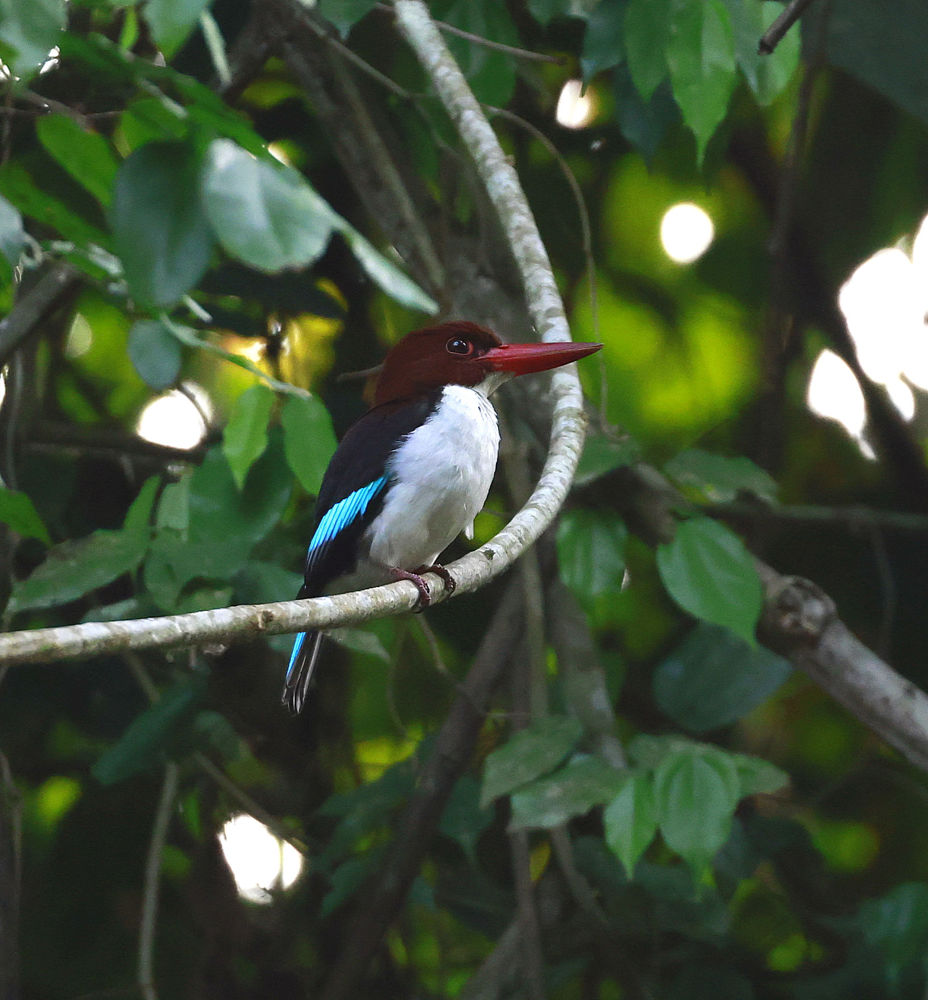
Chocolate-backed Kingfisher © Andrew Whittaker
Our route then took us west, toward Ankasa Reserve. A stop at a wetland along the way turned up the attractive but tiny African Pygmy-Goose, Allen’s Gallinule, and Orange Weaver. Reichenbach’s Sunbirds and Swamp Greenbuls welcomed us to the forested grounds of our beautiful lodge along the Ankasa River. Over the next days, we used 4x4 jeeps to explore the deserted trails and dirt roads of the magnificent rainforest, devoting much of our time to two secluded forest pools. Our highlights included such greats as Long-tailed Hawk, Fraser’s Eagle-Owl, Great Blue Turaco, Red-chested Owlet, Green Hylia, and a fantastic displaying male Rufous-sided Broadbill.
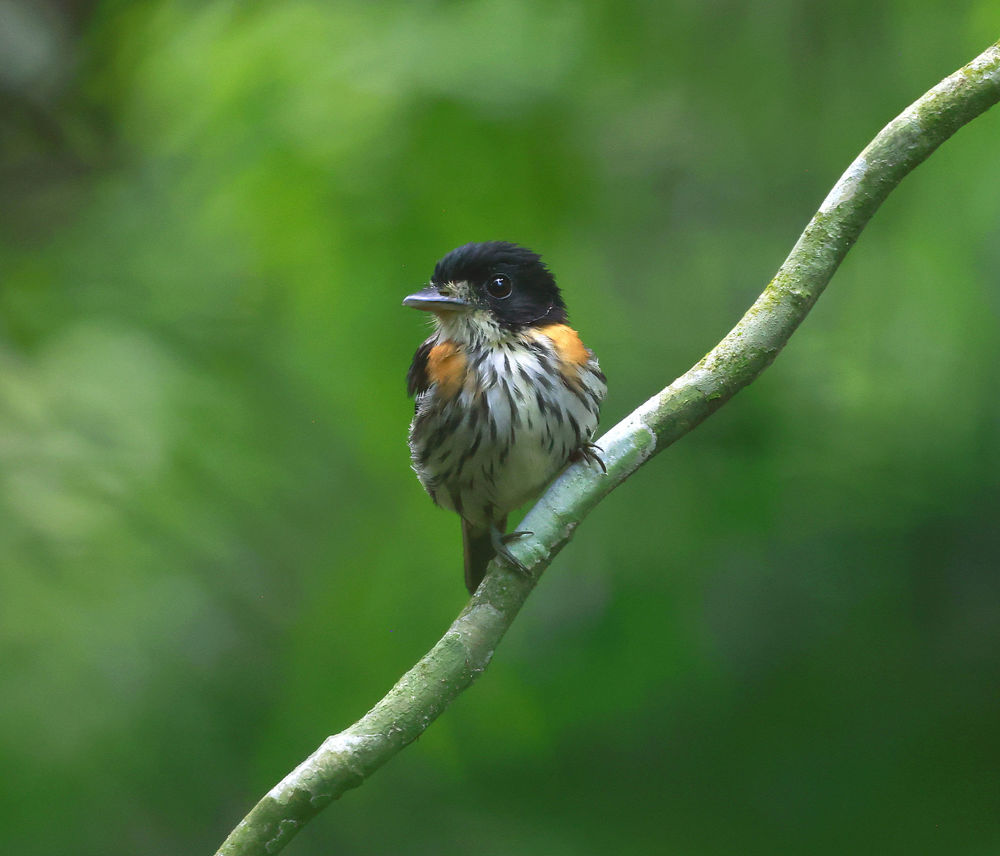
Displaying Rufous-sided Broadbill © Andrew Whittaker
The forest pools proper were extremely rewarding, and we enjoyed Spot-breasted Ibis, repeated studies of African Finfoot, the rare Hartlaub’s Duck, Red-fronted Antpecker at a nest, and White-bellied, Shining-blue, and Dwarf kingfishers, along with several Dwarf Crocodiles.
One evening, as nightfall approached deep in the forest, Philip skillfully found us a roosting pair of the legendary Nkulengu Rail. He had followed the sound of their wild duet some 200 feet from the road, where he somehow, amazingly, located them perched 20 feet above the trail: What a treat!
We left this fantastic area and backtracked to Jukwa, with some super birding at the Brenu Beach grasslands. Here we had spectacular views of Guinea Turaco, African Harrier-Hawk, Great Spotted Cuckoo, Mottled Spinetail, Black-crowned and Brown-crowned tchagras, and Copper Sunbird. The next morning’s sweaty but productive walk tallied African Cuckoo-Hawk, Buff-spotted Woodpecker, Marsh Tchagra, the lovely Black-bellied Seedcracker, and Magpie Mannikin. We had fantastic luck exploring some farm brush with much cacao, where we found our main objectives, the striking Red-cheeked Wattle-eye and the amazing White-spotted Flufftail—that shy, elusive forest crake even came out into full view!
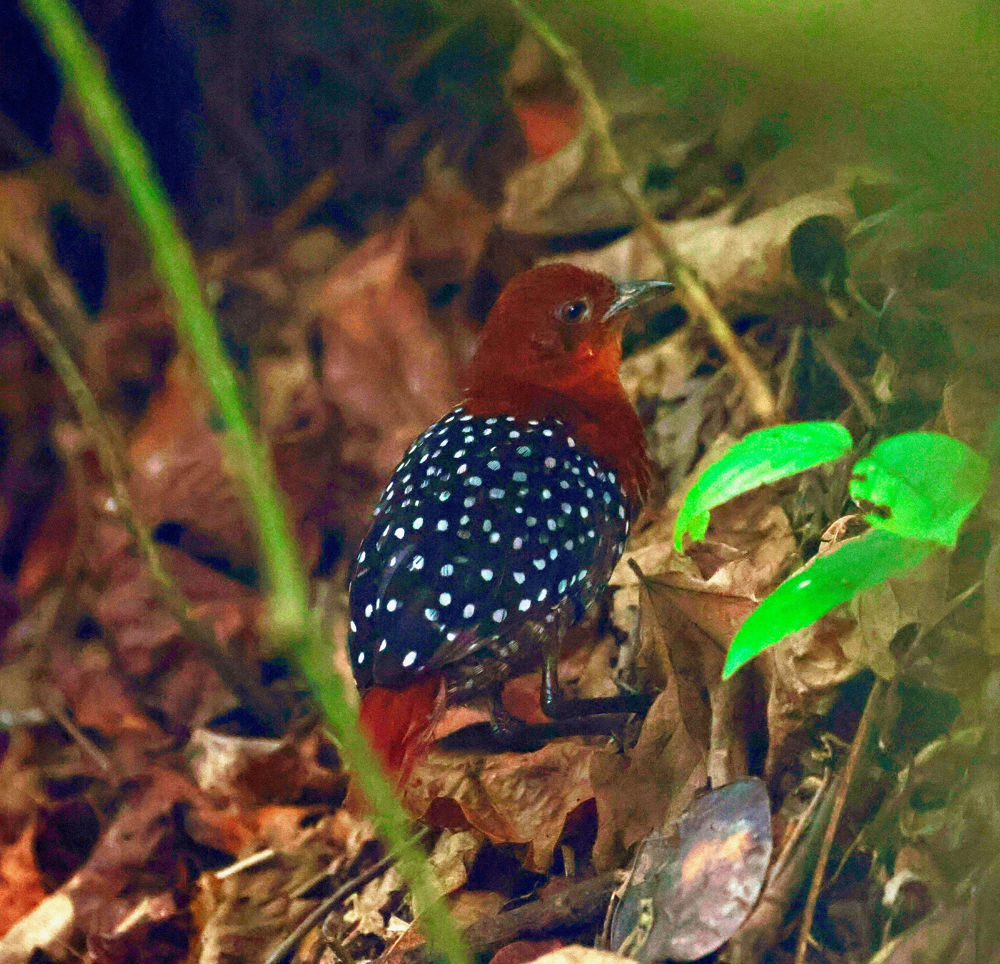
White-spotted Flufftail © Andrew Whittaker
At a stop at the rocky Pra River, we quickly located delicate Rock Pratincoles perched on boulders and catching insects on the wing while smart White-throated Swallows flew around the bridge. To Philip’s surprise, I even found a rare White-crowned Lapwing, the icing on the morning’s cake.
We arrived at our lodge in the Abrafo Forest Reserve, where over lunch on the grounds I located nesting burrows of both Little and Black bee-eaters. Mid-afternoon found us hiking through the lovely forest, where we were soon marveling at the highly sought-after White-necked Rockfowl. WOW: observing these large and bizarre forest dwellers appear out of the dense forest as if by magic and then bounce around, leaping an amazing four to five feet at a time between perches, as we sat quietly on benches just yards away was simply the experience of a lifetime!
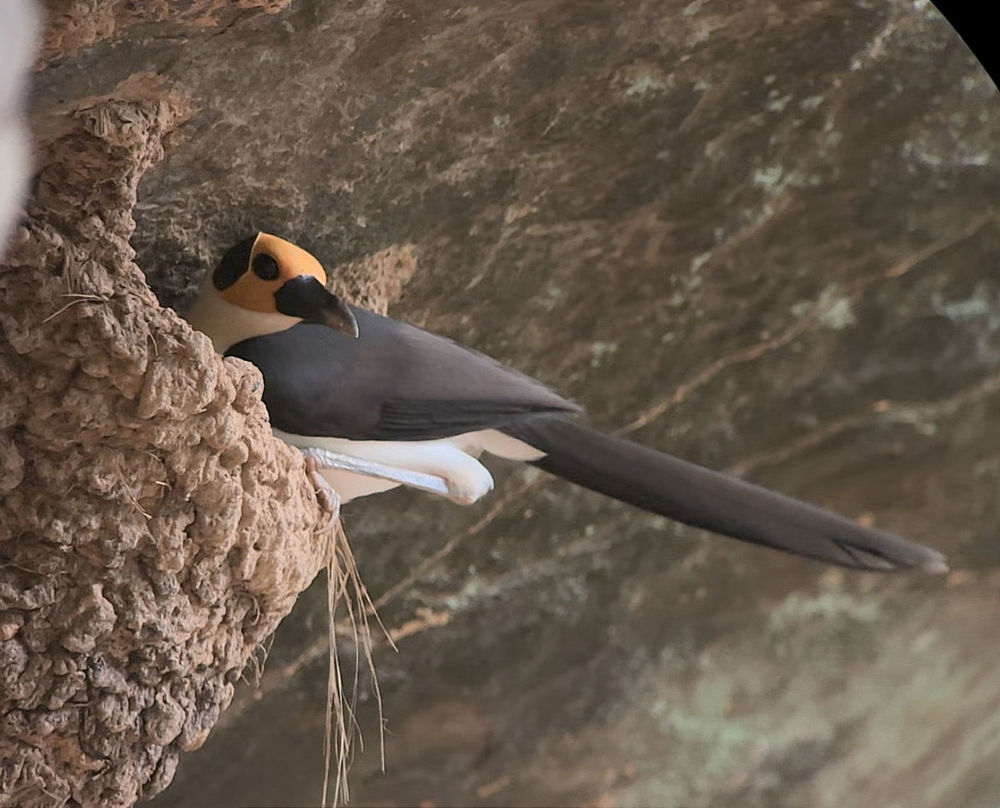
White-necked Rockfowl, a true West African great © Andrew Whittaker
From here, we headed farther north to Kumasi and the forests of Bobiri Butterfly Sanctuary. We instantly understood the reserve’s name, as the trails were brimming with hundreds of thousands of migrating brown butterflies and more colorful residents, too. We heard and quickly tracked down a fabulous male Narina Trogon, enjoying marvelous scope views of this stunning bird, a member of the subspecies constantia, with large yellow wattles more like a Bare-cheeked Trogon. Other goodies were Blue Cuckooshrike, Black-winged Oriole, Splendid Starling, and the uncommon Black Spinetail overhead.
As we continued north, the countryside became more and more arid, making water a scarce resource for any wildlife. We pulled up at a lake that was alive with an insect hatch, attracting birds galore. A migrating flock of magnificent pink Northern Carmine Bee-eaters greeted us, hawking overhead and some perching on nearby trees—WOW. A Hamerkop fed in the pools, and multiple Grasshopper Buzzards were catching large flying insects above us; even a Booted Eagle and a Lanner Falcon joined in. Roadside trees held our first crippling Blue-bellied Rollers.
Next up was a stop at the White Volta River in search of the enigmatic and sublimely beautiful Egyptian Plover. An active Black-headed Heron colony caught our attention first, before we passed some anxious moments looking for the plover, which was finally located by Andy. We enjoyed great scope studies of this mega bird, nesting on the sandbar. This was a fantastic new family for all of us. We also met up with several Wattled Lapwings and Speckled Pigeons.
A drive through drier Guinean woodland and savanna brought us to spectacular Mole National Park. Our delightful lodge, atop an 800-foot escarpment, offered breathtaking views out over the park’s 1,900 square miles. What an amazing feeling it was to sit on our private balconies and watch the antics of elephants bathing in the watering hole below! The lodge gardens had delightful Pygmy Sunbirds, Red-throated Bee-eaters, localized Rock-loving Cisticola, Familiar Chat, Red-cheeked Cordonbleu, Little Weaver, and the superb Lavender Waxbill. A very cool-looking Blotched Genet was an unexpected visitor to the dining area, and at night we heard howling Spotted Hyenas.
We had a blast everywhere in the park, using our bus as a safari vehicle and exploring on foot. Our rewards included many sought-after birds, including Forbes’s Plover, White-throated Francolin, Stone Partridge, and the odd-looking Oriole Warbler. The real standout was the incomparable Standard-winged Nightjar, a male flying around showing off its unique wing ornaments, two long feathers that followed above and behind; it simply has to be seen to be believed!
This enchanting park came up trumps with colorful gems catching our attention at every stop. Water holes proved a magnet for thirsty birds, and we were treated to fine studies of Greater Painted-Snipe, Senegal Thick-knee, Purple Heron, Malachite and Blue-breasted kingfishers, Green Sandpiper, and Red-billed and Bar-breasted firefinches.
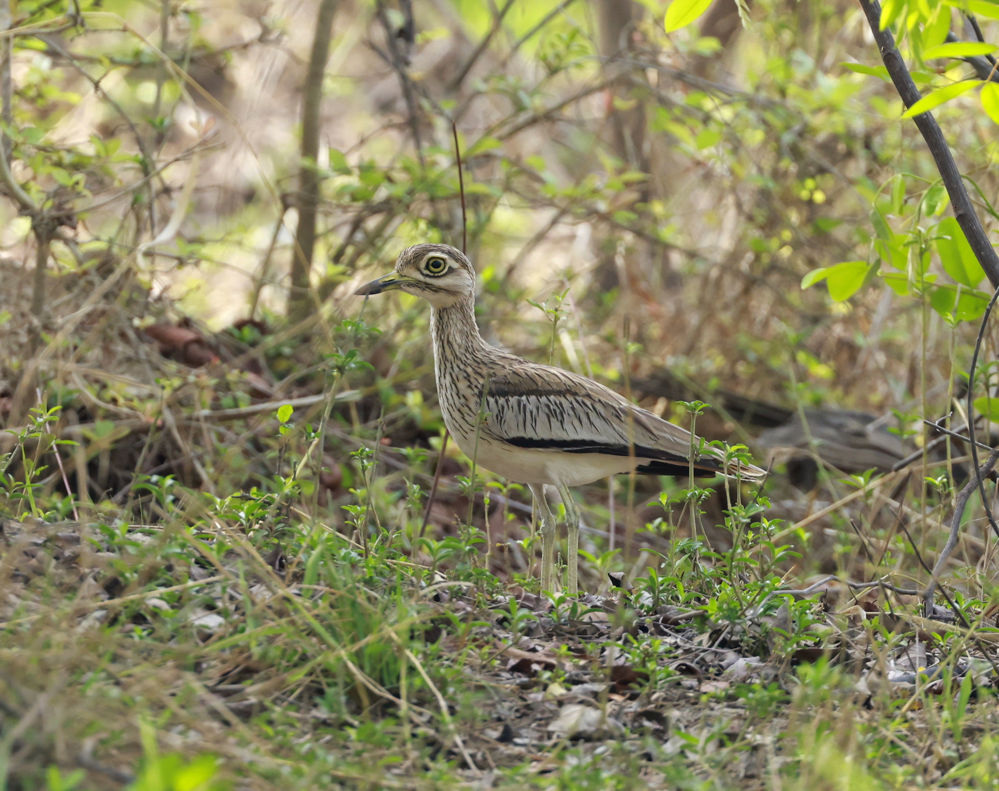
Senegal Thick-knee © Andrew Whittaker
Our enjoyable safari drives turned up several of those same species, alongside such additional greats as the West African Helmeted Guineafowl (a possible split), Squacco Herons, Red-throated Bee-eater, Abyssinian and Purple rollers, the crippling Violet Turaco, Senegal Parrot, Bearded Barbet, Grayish Eagle-Owl, White-crested Helmetshrike, Snowy-crowned Robin-Chat, Red-winged Pytilia, and Sun Lark. We also had great looks at such coveted raptors as the Western Banded Snake-Eagle, Bateleur, African Fish-Eagle, and, more briefly, an immense Martial Eagle.
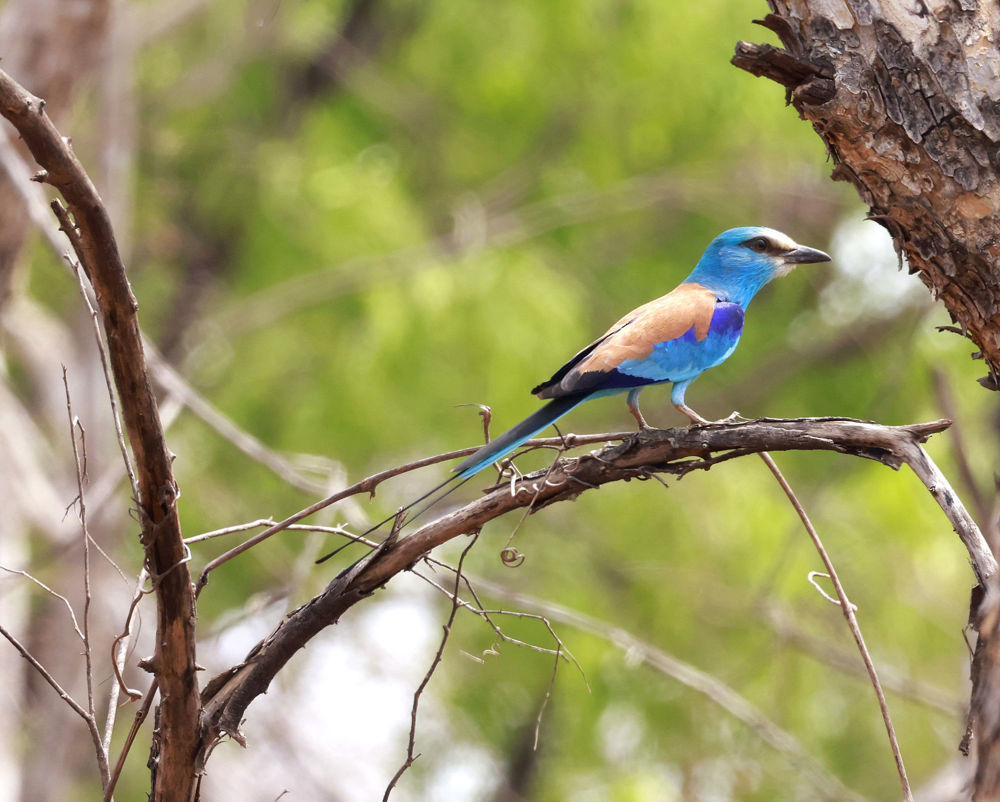
Abyssinian Roller © Andrew Whittaker
After such a great time here, we began the return south with another visit to the lovely Bobri forest, where we caught up with the famous Gray Parrot perched and enjoyed better studies of Long-tailed Hawk, Black and Thick-billed cuckoos, Forest Scimitarbill, Gray-headed Bristlebird, Splendid Starling, and odd-looking Red-billed Helmetshrikes. At Boadeng-Fiema Monkey Reserve, we enjoyed mega views of the endangered Campbell’s Mona and the striking black and white Geoffroy’s Colobus, which live in surprising harmony with the human community: they certainly appreciated our bananas. Another productive excursion produced the odd but striking Double-toothed Barbet, a fine Green-backed Woodpecker, Whistling Cisticola, Black-winged Bishop, a Chestnut-and-black Weaver colony, a nice flock of Red-headed Quelea, and Compact and Grosbeak weavers.
We proceeded to the fabulous forest of Kalakpa Resource Reserve, with birding stops en route; we enjoyed a great lunch at the Volta River. Added to our lists were a confiding African Cuckoo on a wire and several Mouse-brown Sunbirds. After checking into our hotel, we made a very successful late afternoon excursion to farm scrub, finally getting the skulky Ahanta Spurfowl, a smart pair of Red-necked Buzzards, Black Goshawk, Purple Roller, Moustached Grass-Warbler, Singing Cisticola, Olive-naped Weaver, and the glistening Purple Starling. Dusk here was superb, with great studies of another male Standard-winged Nightjar, this time displaying to a female with its outrageous wing pennants. We also found a lovely Northern White-faced Owl.
Next morning, the gallery forest reserve echoed with the bizarre ringing hoots of both Fiery-breasted and Many-colored bushshrikes; we managed to see both well as they fed in the vines. Other exciting species were Red-shouldered Cuckooshrike, the unusual Black-and-white Shrike-flycatcher, African Paradise-Flycatcher, Sharp’s Drongo, Pied-winged Swallow, Leaf-love, Baumann’s Greenbul, Red-tailed Bristlebill, and a nest-building Crested Malimbe. We returned to the bustling capital of Accra that afternoon and our comfortable beach hotel, where the Black Heron showed off again for those of us who had not seen it at the beginning of this fabulous trip through such a lovely country.
TEN FAVORITE BIRDS:
1. WHITE-NECKED ROCKFOWL
2. STANDARD-WINGED NIGHTJAR
3. EGYPTIAN PLOVER
4. ABYSSINIAN ROLLER
5. NARINA TROGON
6. FORBES’S PLOVER
7. BLACK BEE-EATER
8. AFRICAN FINFOOT
9. LONG-TAILED HAWK
10. NORTHERN CARMINE /BLUE MOUSTACHED BEE-EATERS
A complete list of the birds recorded on our tour can be found at: https://ebird.org/tripreport/

